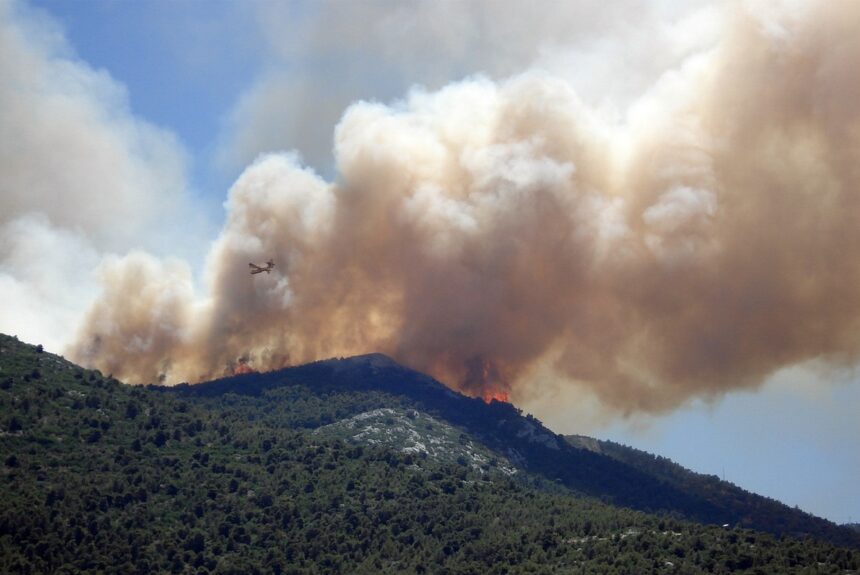Last week I had the privilege of testifying before the Senate Budget Committee on the economic and environmental costs. My oral remarks covered the drivers and influences of wildfires, the economic and environmental costs of wildfires, and solutions to reduce wildfire risk and damages. My full written testimony is available here.
Here’s what I told the committee:
Many factors contribute to the severity and intensity of wildfires. Human-driven climate change has made the world warmer and parts of the world drier, including the western U.S., which reduces soil moisture and lengthens wildfire seasons. Continued warming will very likely exacerbate those conditions.
Population growth and where people choose to live is a significant contributor to wildfire risk as more people have moved to the Wildland Urban Interface (WUI) where development meets wilderness. Homes in the WUI grew 41 percent from 1990-2010, and a recent report by FEMA and the U.S. Fire Administration stated that 99 million people live in the WUI, and there are 46 million homes with an estimated $1.3 trillion in value at risk of wildfires.
>>>READ: Without Reforms to the Environmental Review Process, Wildfires Will Grow Worse
Critically, research shows that the fuel load on federal, state and private forests is the driving factor that makes wildfires larger, hotter, and more destructive. The fuel load is anything that can burn: from grass, shrubs and small trees to dead leaves and materials on the forest floor.
When a fire occurs in a forest with a full fuel load, it is significantly more intense and widespread, and therefore much more difficult to contain. Without proper management, whether through prescribed burns or mechanical thinning, these forests become tinder boxes.
And when these fires blaze, they are devastating. They claim lives. They have adverse effects on peoples physical and mental health. They destroy communities in minutes or hours, which will take years to recover and rebuild. In 2021 alone, wildfires burned nearly 6,000 structures – 60 percent of which were residences.
Wildfires cause a significant loss of wildlife, vegetation, and habitat. In the years 2015, 2017 and 2020, more than 10 million acres burned (an area more than six times the size of Delaware). Wildfires increase particulate matter, greenhouse gas emissions and increase the risk of erosion.
Furthermore, wildfires are costly to the taxpayer and the broader economy. The five-year average for federal suppression costs is more than $2.8 billion annually. A recent study in the American Economics Association totaled the suppression costs for 11 western states to be more than $13 billion from 1995-2016. More wide-ranging estimates of the direct and in-direct costs of wildfires show that annualized losses can be in the tens, if not hundreds of billions of dollars.
To reduce the costs, policymakers must act with urgency. Global decarbonization will help minimize human-induced warming’s impact on wildfires and wildfire seasons. Part of that solution is healthy U.S. forests and working cooperatively to ensure that these forests are carbon sinks, not carbon sources.
The most pressing issue for forest managers and communities threatened by wildfires is the density and overgrowth. Productively, the Biden administration recognizes what’s at stake, unveiling an aggressive and necessary plan to expand forest thinning and prescribed burns on 20 million acres of national forest lands and 30 million acres of other federal, state, tribal and private lands – all within a decade.
>>>READ: Why are Wildfires Getting Worse? Regulations Are Partly to Blame
Yet protracted regulations and litigation often delay the implementation of these plans. A June 2022 report from the Property and Environment Research Center examined how long it takes the Forest Service to comply with National Environmental Policy Act requirements. The authors found that it takes 3.6 years on average from initiation to treatment for mechanical thinning and 4.7 years on average for prescribed burns. More rigorous reviews and lawsuits delay projects even further.
Cutting red tape for greener forests can and should be consistent with rigorous environmental review and safeguards. But analysis paralysis and seemingly endless litigation takes away precious resources, and more importantly, precious time where years’ long delays could be years spent on the ground reducing the fuel load.
In addition to streamlining environmental review processes, expanding collaborative partnerships and harnessing positive incentives with states, non-profits, tribes, and the private sector will help treat and restore forests. These relationships can assist in deploying innovative technologies like satellites, drones, and predictive algorithms for early detection and communications. They can help with on the ground treatment and with eradicating invasive species. And they can help address seed shortages and forest restoration after a wildfire has burned through.
In conclusion, healthy forests provide many economic and environmental benefits to communities and the planet. If improperly managed, however, America’s forests are an economic, environmental, and public safety liability. Modernizing policies to empower people in all levels of government and in the private sector to take care of America’s forests will save lives and livelihoods, protect the environment, reduce costs to the taxpayer and lessen overall damages on the American economy.
The views and opinions expressed are those of the author’s and do not necessarily reflect the official policy or position of C3.
